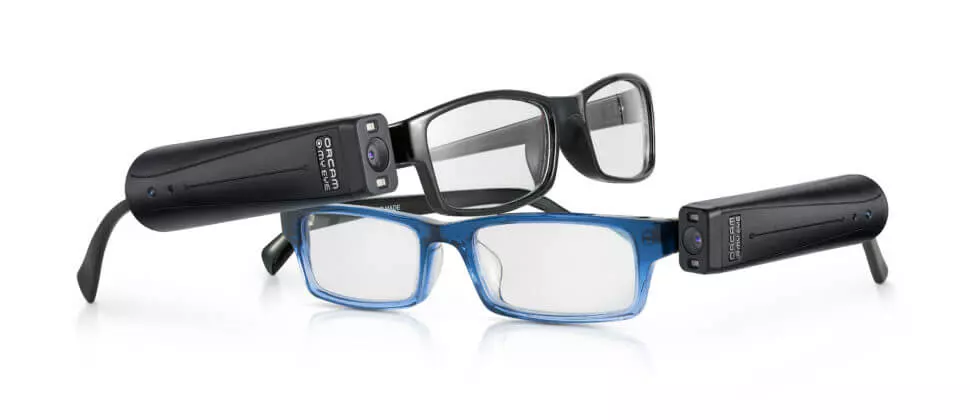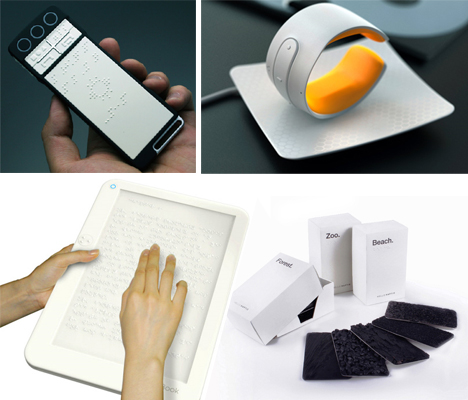Discover Innovative Devices Made for the Aesthetically Damaged
The growth of cutting-edge tools for the aesthetically impaired represents a considerable improvement in availability and independence. Technologies such as clever glasses with AI capabilities and mobile applications created to supply acoustic summaries are improving day-to-day experiences for individuals.
Smart Glasses for Navigation

Smart glasses designed for navigation are reinventing the method visually damaged individuals interact with their atmosphere. These advanced devices utilize a combination of cam modern technology, expert system, and acoustic feedback to supply real-time details concerning surroundings. By employing challenge detection systems, smart glasses can signal users to prospective threats, making it possible for much safer wheelchair in both strange and acquainted settings.
The assimilation of GPS innovation better boosts navigating capacities, enabling users to obtain acoustic instructions as they relocate. This hands-free technique not only cultivates self-reliance but additionally encourages visually damaged individuals to navigate city landscapes with raised confidence. Furthermore, several smart glasses are geared up with attributes that identify spots and street signs, giving contextual information that enhances the customer experience.
In addition, the advancement of these gadgets is continually progressing, with companies working to improve the accuracy of things acknowledgment and increase the array of navigational functions. As wise glasses end up being a lot more inexpensive and available, they hold the possible to substantially transform day-to-day live for visually impaired individuals. Eventually, these cutting-edge devices represent a vital action towards inclusivity, offering enhanced mobility and a higher sense of autonomy for people navigating the world around them.

Mobile Apps for Daily Living
Just how can mobile applications enhance the lives of visually damaged individuals? Mobile applications are reinventing the method visually impaired users browse their atmospheres, manage everyday tasks, and gain access to details. These applications offer essential support via different functionalities, fostering freedom and improving lifestyle.
Numerous cutting-edge mobile apps are designed particularly for day-to-day living. Applications like Be My Eyes link visually impaired users with sighted volunteers through video phone calls, enabling them to receive real-time help with jobs such as reviewing tags or browsing strange rooms. Likewise, Seeing AI, created by Microsoft, makes use of artificial intelligence to describe surroundings, read text, and determine items, properly changing a smart device right into an effective device for daily assistance.
In addition, navigating applications tailored for the visually damaged, such as Aira and BlindSquare, use audio-based directions and environmental details, making it possible for customers to traverse their environments safely and confidently. Past navigation and immediate assistance, mobile apps additionally support organization and job administration, with features that help users establish tips, create order of business, and track consultations. In summary, mobile applications act as important resources, empowering aesthetically impaired people to lead more independent and fulfilling lives.
Wearable Technologies for Assistance
Empowerment with innovation is significantly obvious in the realm of wearable tools designed to help visually damaged individuals. These cutting-edge tools incorporate perfectly right into everyday life, enhancing navigation and providing necessary feedback to customers. Clever glasses furnished with cams can identify faces and review message out loud, allowing individuals to engage even more with confidence in social and expert setups.
An additional noteworthy innovation is the usage of haptic feedback systems in wearable gadgets. These systems use resonances or various other tactile signals to convey info regarding the user's atmosphere, such as barriers or adjustments in terrain, improving flexibility and safety. Wearable innovations likewise consist of wristbands that attach to smart devices, alerting users to notifications through subtle vibrations, therefore boosting connection without dependence on aesthetic signs.
As these technologies continue to evolve, they are not just improving freedom for visually impaired individuals but also fostering a greater feeling of inclusion in culture. By linking the void in between difficulties dealt with in everyday living and the possibility for freedom, wearable innovations offer as critical tools in the quest for equal rights and empowerment for those with aesthetic problems.
Sound Summary Tools
Audio summary devices play a vital duty in boosting access for aesthetically impaired individuals, giving them with the capability to involve with aesthetic media. Mobility aids for visually impaired users. These devices supply narrated summaries of crucial visual elements in films, television shows, and live efficiencies, guaranteeing that customers can totally understand the context and emotions shared through visuals
Sound description can be integrated into different platforms, consisting of streaming services, movie theater screenings, and live movie theater. Numerous popular streaming solutions currently include audio summary as an access feature, permitting customers to select it quickly. Along with conventional media, specialized apps likewise exist, providing audio summaries for art exhibitions, museums, and various other cultural events.
The performance of audio description depends upon the skill of the narrators, that must communicate visual information succinctly without diminishing the original sound. Developments in this area are additionally paving the means for even more individualized experiences, where customers can adjust the level of information and pacing according to their choices.
Braille Innovations and Tools
Braille developments and tools have substantially changed the way aesthetically pop over to this web-site damaged people communicate with message and info. Modern improvements have actually led to the development of flexible devices that boost proficiency and independence amongst users.
In addition, mobile Braille notetakers combine traditional Braille input with modern-day capabilities, helping with note-taking, scheduling, and paper editing and enhancing on the move. Wearable technology for low vision. These portable devices frequently feature text-to-speech abilities, connecting the gap between Braille and auditory information
Additionally, cutting-edge Braille printers have actually arised, permitting individuals to create Braille labels, papers, and educational materials successfully. This access cultivates better engagement in professional and educational settings, inevitably promoting inclusivity.
Additionally, research right into wise Braille innovations remains to expand. Devices that include fabricated intelligence are being explored to provide real-time navigation aid and contextual info, enhancing the customer experience in varied settings. Overall, these developments reflect a dedication to equipping visually damaged individuals via innovation, ensuring they can conveniently accessibility and engage with the globe around them.

Conclusion
The innovation of cutting-edge tools for the visually damaged substantially enhances freedom and high quality of life. These technologies not just foster higher inclusion yet likewise advertise autonomy in day-to-day activities, inevitably contributing to a more equitable and obtainable society for aesthetically impaired people.
As smart glasses end up being much more obtainable and cost effective, they hold the possible to dramatically transform everyday life for visually impaired individuals. Mobile apps are reinventing site link the way visually damaged customers navigate their environments, take care of daily tasks, and gain access to details. Apps like Be My Eyes link aesthetically damaged users with sighted volunteers by means of video clip calls, enabling them to get real-time aid with tasks such as checking out tags or browsing strange rooms.In addition, navigating apps tailored for the visually impaired, such as Aira and BlindSquare, use audio-based instructions and ecological information, allowing individuals to traverse their environments securely and with confidence.The advancement of innovative tools men's eyeglasses for the visually damaged dramatically enhances independence and quality of life.